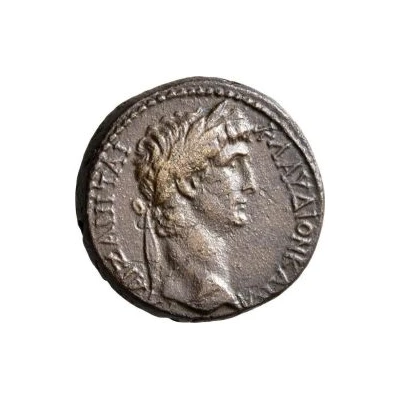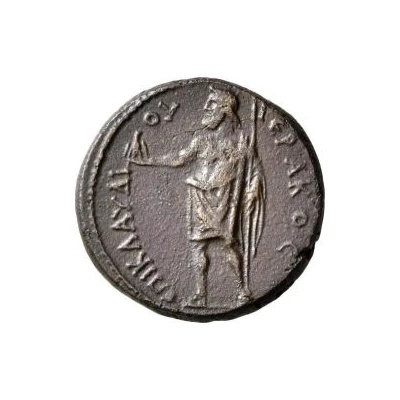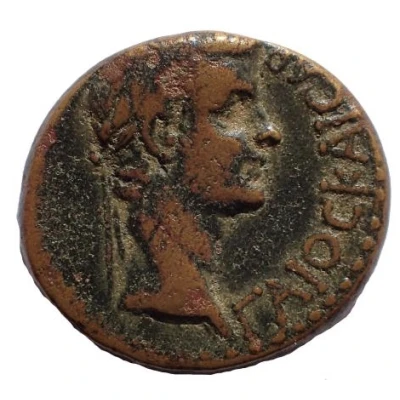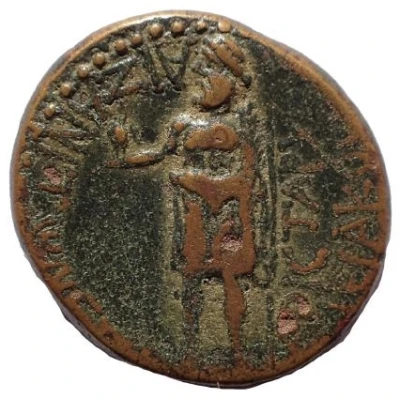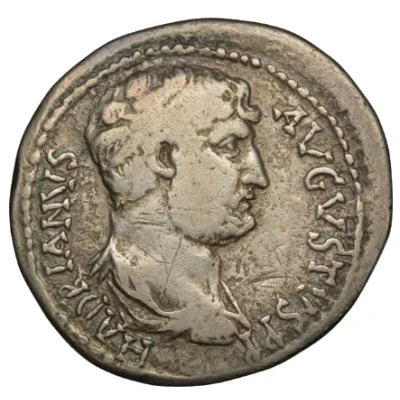
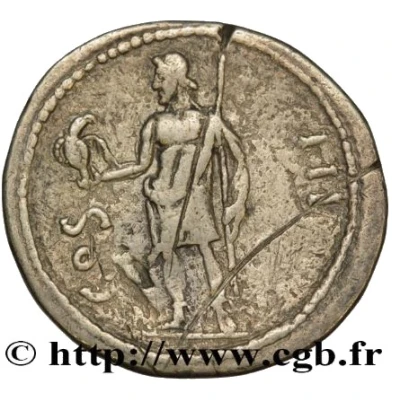

© CGB
Cistophorus - Hadrianus COS III
| Silver (.900) | 9.27 g | 27 mm |
| Issuer | Aezani (Conventus of Sardis) |
|---|---|
| Emperor | Hadrian (Publius Aelius Hadrianus) (117-138) |
| Type | Standard circulation coin |
| Years | 128-130 |
| Value | Cistophorus (4) |
| Currency | Drachm |
| Composition | Silver (.900) |
| Weight | 9.27 g |
| Diameter | 27 mm |
| Shape | Round (irregular) |
| Technique | Hammered |
| Orientation | Coin alignment ↑↓ |
| Demonetized | Yes |
| Updated | 2024-10-10 |
| Numista | N#199920 |
|---|---|
| Rarity index | 100% |
Reverse
Jupiter standing left, holding an eagle in right hand and a scepter in left hand.
Script: Latin
Lettering: COS III
Unabridged legend: co(n)s(ul) III
Translation: Consul for the third time
Edge
Rough
Comment
This example belongs to a new corner combination. In his corpus, Metcalf listed thirteen examples for this city, eleven of which were overprinted with eleven right-hand and twelve reverse corners.The cistophoric coinage created by the kings of Pergamum endured under Roman rule. Sporadically minted since the death of Nero, Hadrian's trip to Asia Minor encouraged the resumption of this coinage. Hadrian, himself a great initiate, visited Ephesus, one of the most important centers of Hellenistic culture. The cistophore, which corresponded to four drachmas in the Pergamon system, had the equivalent value of three denarii. W. Metcalf has identified a total of four examples of this cistophore, with two right-hand corners and three reverse corners.
CGB
Interesting fact
One interesting fact about this coin is that it features an image of the Roman emperor Hadrian on one side and a stylized representation of the goddess Cybele on the other. Cybele was an important deity in ancient Anatolia, where the coin was minted, and her association with Hadrian may have been intended to promote unity and stability in the region.
